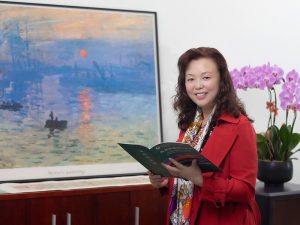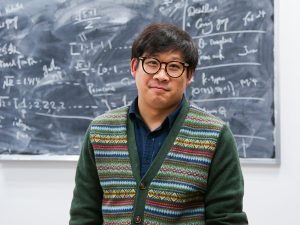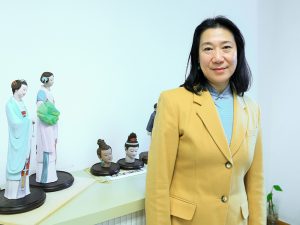A common adage says that beauty is in the eye of the beholder. Indeed, beauty does not exist on its own, but is created by those who observe it. As long as we have an eye for beauty and a heart that can feel it, we will find beauty everywhere in our daily lives.
The Beauty of Translation
‘Translation is a process of discovering, realising, spreading, and creating beauty,’ says Prof Yang Liu, a translation expert and master of Ma Man Kei and Lo Pak Sam College. During her university days, she learned the Bel Canto (Italian for ʻbeautiful singingʼ) style of operatic singing and frequently attended lectures on aesthetics. Later, during her doctoral studies, she explored the aesthetics of translation within the theoretical framework of interdisciplinary research, a topic about which she has written and published several academic books.
Fei Xiaotong, a Chinese sociologist, once proposed that if people can cherish the beauty of their own culture while respecting that of others, the world will become one. Prof Yang believes that good translation work embodies this idea: ‘Translation is a rewriting and rebirth of an original text. It transmits cultural elements and understandings from one language to another, so that they can be appreciated in foreign contexts. In fact we can consider translation as a process of cultural formation and transformation.’
Beyond translation, Prof Yang believes that we can find beauty in all aspects of life. ‘As long as you have an eye for beauty, you will always see it when visiting different countries, exploring different cultures, discovering new ways of life, and even, in my case, meeting different students from time to time.’
The Beauty of Mathematics
Prof Chao Kuok Fai, associate master of Lui Che Woo College, began to find mathematics beautiful and fun in secondary school. ‘I never stopped exploring mathematics since then. I even pursued a PhD degree and became a professor of math,’ says Prof Chao. ‘It’s like a journey of diving. The deeper you dive, the more you are charmed by the big and beautiful world underwater.’ During our interview, Prof Chao wrote one equation after another on the blackboard in his office to explain why he finds mathematics beautiful.
According to Prof Chao, the beauty of mathematics lies in its ability to reduce the complexity of things into succinct equations. ‘The simple Euler identity [Euler equation] is a wonderful example because it connects five fundamental mathematical constants (0, 1, π, e and i) in one single equation,’ says Prof Chao. He adds that while all numbers are beautiful by themselves, some are surprisingly more so than others. ‘1729 is a magic number. It can be written as the sum of two cubes in two different ways, like 1³+12³ and 9³+10³. Numbers that share these properties are known as taxicab numbers, and 1729 is the smallest natural number of them.’
Symmetry is another form of mathematical beauty to Prof Chao. ʻWhen a biologist looks at an antibody and tries to assess its clinical significance, I would probably find joy in observing its molecular symmetry,ʼ says Prof Chao.
The Beauty of Art
Zhang Zexun, associate professor in the Faculty of Education, is a fifth-generation descendant of a family that makes ʻZhang clay figuresʼ, a famous type of painted sculpture from the Qing dynasty in Tianjin and a listed national intangible cultural heritage in China. Prof Zhang finds a unique beauty in both making these sculptures and observing the final creations.
Prof Zhang says that creating the clay figures is a problem-solving process that helps her release her emotions. Although unexpected challenges sometimes arise, she enjoys solving them step by step with research, coming up with a final product, and planning for the next one.
Prof Zhang also says that to truly appreciate a work of art, one has to look beyond its exterior appearance and understand its inner meaning from a broader perspective. ‘I always ask my students not to look at artworks, but to read them, to explore their cultural meaning as a product of their social environment,’ says Prof Zhang. ‘In this way, I hope they will create their own artworks by connecting them more closely to the spirit in the new era and give their beauty a deeper meaning.ʼ
Source: My UM ISSUE 112



